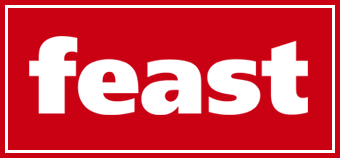Selecting from the labeling machines is a sensitive task for any organization that deals with the packaging of its products. If you’re in a business that involves labeling bottles, jars, or any other container, the argument between fully automatic and semi-automatic labeling machines can go a long way in determining your productivity as well as your expenses. Here for your convenience, each section will outline and compare the various aspects that will assist in coming to the right decision.
What Are Fully Automatic Labeling Machines?
Fully automatic labeling machines are progressed frameworks intended to deal with labeling undertakings with insignificant human mediation. These machines are able to consequently take care of, adjust, mark, and gather items, making them ideal for high-volume creation lines.
Key Features of Fully Automatic Labeling Machines:
- High-Speed Operation: Capable of labeling hundreds or even thousands of bottles, jars, or any other container per hour.
- Precision and Accuracy: High-level sensors and arrangement frameworks guarantee reliable and mistake-free labeling
- Integration with Production Lines: This can be consistently coordinated into existing creation lines, including filling and covering frameworks.
- Versatility: Appropriate for different holder shapes and sizes, like round, square, and oval jugs.
- Automation of Quality Checks: Many models accompany vision frameworks to assess mark position and distinguish abandons progressively.
What Are Semi-Automatic Labeling Machines?
Semi-automatic labeling machines require some degree of manual information, like situating the item or setting off the labeling system. These machines are regularly more reduced and reasonable, making them a famous decision for small to medium-sized organizations.
Key Features of Semi-Automatic Labeling Machines:
- Manual Assistance Required: Operators need to load and align products manually.
- Moderate Speed: Suitable for low to medium production volumes.
- Ease of Use: Simple controls and minimal training required.
- Flexibility: Ideal for businesses that label small batches or frequently switch between products.
- Cost-Effective: Lower forthright expenses contrasted with Fully automatic machines.
Comparing Fully Automatic and Semi-Automatic Labeling Machines
| Feature | Fully Automatic Machines | Semi-Automatic Machines |
| Speed | High-speed, suitable for large volumes | Moderate, ideal for smaller batches |
| Cost | Higher initial investment | The more affordable upfront cost |
| Labor Requirement | Minimal | Requires manual assistance |
| Precision | Extremely high | High, but it depends on the operator’s skill |
| Integration | Seamless integration with production | Limited integration capabilities |
| Flexibility | Handles diverse packaging needs | Better for smaller, varied batches |
Which Machine Is Best for Your Business?
Picking either a Fully Automatic or Semi-Automatic Labeling machine relies upon a few elements, including your creation volume, financial plan, and explicit functional requirements. We should dig into these contemplations:
- Production Volume
If your business operates a high-volume production line, fully automatic labeling machines for bottles are the clear choice. Their speed and efficiency can handle large-scale operations without bottlenecks.
For low to medium volumes, a semi-automatic machine can deliver reliable performance without unnecessary overhead costs.
- Budget
Fully automatic machines come with a higher price tag but offer long-term cost savings through reduced labor and higher throughput.
Semi-automatic machines are more affordable initially, making them a practical choice for startups and small businesses.
- Product Variety
If your product line includes various bottle shapes and sizes, fully automatic machines with customizable settings provide the versatility needed.
For businesses labeling smaller, diverse batches, semi-automatic machines offer the flexibility to switch between products with ease.
- Space and Infrastructure
Fully automatic machines require more space and infrastructure, such as conveyors and power supply setups.
Semi-automatic machines are compact and portable, making them suitable for businesses with limited space.
- Labor Costs
Fully automatic machines limit work costs by robotizing most cycles.
Semi-automatic machines require manual info, which could increment work costs relying upon creation volume.
Benefits of Fully Automatic Labeling Machines for Bottles
- Scalability: Ideal for organizations intending to scale their tasks.
- Consistency: Guarantees uniform labeling even at high velocities.
- Time-Saving: Decreases free time and rates up creation processes.
- Compliance: Satisfies rigid industry guidelines for labeling exactness and quality.
Benefits of Semi-Automatic Labeling Machines
- Cost-Effectiveness: Lower forthright speculation makes it more straightforward for private ventures to begin.
- User-Friendly: Straightforward activity and support.
- Adaptability: Easily adjustable for different products and labeling requirements.
- Mobility: Compact design allows for easy relocation within the facility.
Additional Considerations for Your Decision
When deciding between fully automatic and semi-automatic labeling machines, consider additional factors such as:
- Maintenance Requirements: Fully automatic machines might require more perplexing support because of their cutting-edge innovation. Semi-Automatice machines are simpler to support, with fewer parts that could fall flat.
- Downtime: Fully automatic machines decrease personal time through nonstop activity. Semi-automatic machines could encounter more slow changes between assignments, particularly assuming the administrator is unpracticed.
- Energy Consumption: Fully automatic machines typically consume more power. Ensure your facility’s power supply can handle the load if opting for an automatic system.
- Future Growth: In the event that you expect to increase your creation line, putting resources into a Fully automatic machine could save you the difficulty of overhauling later.
Real-Life Scenarios
- Scenario 1: A Large Beverage Company A refreshment organization delivering a large number of containers every day would profit from a Fully automatic labeling machine. The fast and accuracy guarantee proficient activities and reliable item quality.
- Scenario 2: A Small Craft Brewery A little specialty distillery labeling restricted groups of exceptional lager jugs could favor a Semi-Automatic labeling machine. Its adaptability and cheaper go with it is a magnificent decision for specialty markets.
FAQS
- What is the main difference between fully automatic and semi-automatic labeling machines?
Fully automatic labeling machines require negligible human mediation and are intended for rapid, enormous-volume activities. Semi-Automatic machines, then again, require manual information and are more qualified for more limited-size creation. - Are fully automatic labeling machines cost-effective for small businesses?
Fully automatic machines are for the most part more costly and forthright. Be that as it may, they can be practical in the long haul for organizations with high creation volumes, as they lessen work expenses and increment proficiency. - Can semi-automatic labeling machines handle different bottle shapes and sizes?
Indeed, most Semi-Automatic machines are adaptable and can be acclimated to oblige different jug shapes and sizes, making them ideal for organizations with assorted product offerings. - What maintenance is required for fully automatic labeling machines?
Fully automatic machines require customary upkeep, including cleaning sensors, assessing transport lines, and refreshing programming. It’s vital to adhere to the producer’s rules to guarantee ideal execution.
Wrapping Up
Both Fully automatic and Semi-Automatic labeling machines offer particular benefits, and the most ideal decision relies upon your business’ extraordinary necessities. Fully automatic labeling machines for bottles are ideally suited for high-volume tasks that request speed, accuracy, and incorporation. Then again, Semi-Automatic machines give adaptability and cost viability to more limited sizes or concentrated creation lines.



